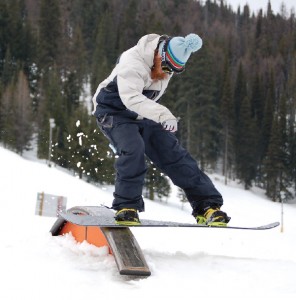
Snowboard tip by Rick Brown
As instructors we are faced with any number of challenges on a daily basis. For many of us, the fun and excitement of teaching comes from tackling these challenges. It seems like no matter what we’ve seen, there is always a new challenge waiting around the corner. Despite these occasional obstacles, it can be easy to get stuck in a rut. It’s so easy to go on autopilot when we are teaching yet another beginner lesson. Whether it’s the 100th lesson we’ve taught or the 1000th, it’s almost always the student’s first. I think the first step to success is to teach every lesson with that in mind.
The next thing I like to focus on is teaching skills, not tasks. We have all been guilty of task based teaching. Tasks are great tools for teaching or for demonstrating skills, but it’s the skill usage in each task that should be the focus. For example, teaching a traverse is great as a tactic for getting from one side of the run to another, and can be accomplished in a number of ways, but if we focus on the movements involved and how they affect performance in the board, it will open up a lot more doors along the way to upper level riding.
Focusing on flexion/extension movements to create torsional flex in the board will move it into a traverse and we will have a skill that will be useful as we move to other tasks. We could also use flexion extension movements to alter pressure from foot to foot which can also produce a traverse, but could add another skill to our arsenal. The movements or skills used to complete the task can be altered depending on the desired outcome or goal. Tasks can also be taught in multiple ways to build different skills.
Every drill that we use and every task we perform is made up of specific movements or skills that will result in specific performance outcomes. Some tasks or drills require one simple movement or skill, while others are made up of more complex combinations of movements or blending of skills.
If we can break down the desired outcome to the specific movement patterns and skills, we can coach to each component individually. Doing so will allow our students to master each component before trying to connect them all together.
[connections_list id=44 template_name=’div_staff_bio’]